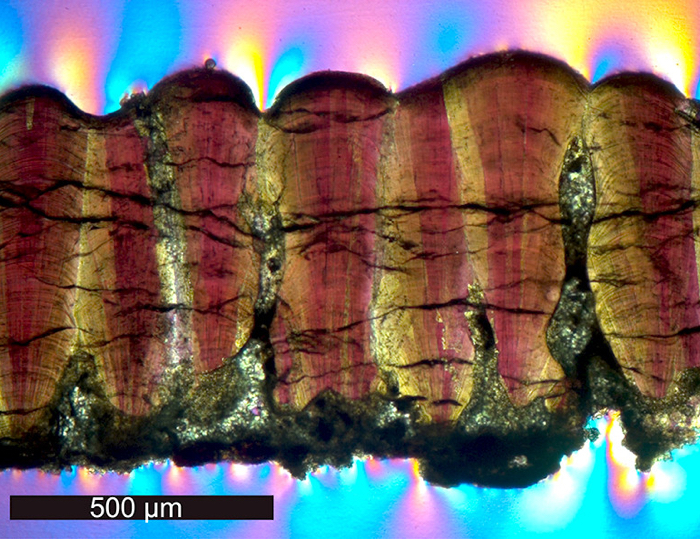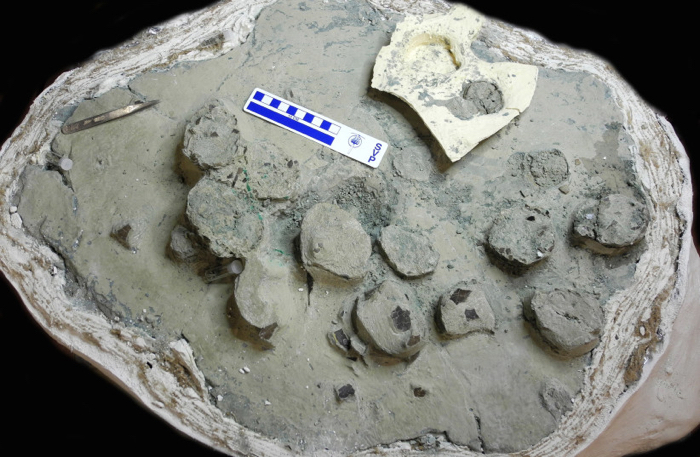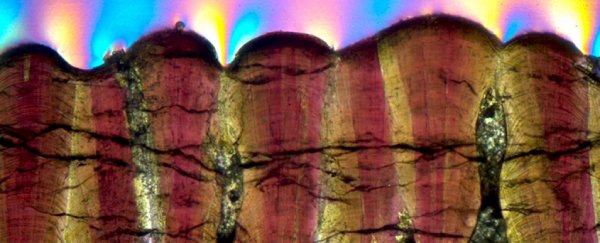One of the great, longstanding mysteries in the study of dinosaurs is the question of whether the blood in those ancient, towering and sometimes terrifying frames ran hot or cold.
Traditionally, it was thought that dinosaurs, like modern-day reptiles, were cold-blooded creatures. In more recent times however, growing awareness of the dinosaurian origin of birds has complicated this assumption, suggesting instead that dinosaurs, like their feathered descendants today, may have had warm blood.
The evidence, at least according to the latest study seeking to resolve this old debate, is that dinosaurs were indeed warm-blooded, based on the composition of ancient chemicals hidden inside fossilised dinosaur eggshells.
"Our results suggest that all major groups of dinosaurs had warmer body temperatures than their environment," says geophysicist Robin Dawson from Yale University (now at the University of Massachusetts-Amherst).
"What we found indicates that the ability to metabolically raise their temperatures above the environment was an early, evolved trait for dinosaurs."
 Dinosaur eggshell fossil in cross-section under a microscope using cross-polarising light. (Robin Dawson)
Dinosaur eggshell fossil in cross-section under a microscope using cross-polarising light. (Robin Dawson)
In their study, Dawson and her fellow researchers investigated eggshell fragments from dinosaurs that dwelled in Canada approximately 75 million years ago, including the large herbivore Maiasaura peeblesorum, and the smaller, bird-like Troodon formosus (classification is being debated on that one).
They also examined an eggshell from Romania, estimated to be approximately 69 million years old, and thought to be from a dwarf titanosaur sauropod.
Using a technique called clumped isotope palaeothermometry, the researchers analysed chemical bonds in the ancient carbonate mineral that makes up the eggshells.
Specifically, the atomic ordering of carbon and oxygen isotopes in the molecular lattice indicates the temperature at which the material formed – in this case, suggesting the internal body temperature of the mother dinosaur who laid the eggs.
 Troodon dinosaur eggs. (Darla Zelenitsky)
Troodon dinosaur eggs. (Darla Zelenitsky)
Using the method, the team found that the samples suggested the body temperatures were hotter than their surrounding environment would have been. In other words, they were endothermic (capable of internally generating heat), as opposed to ectothermic animals, which rely on heat from the environment.
In their testing, the samples ranged from 3 to 6 degrees Celsius warmer than the environment all the way up to 15°C warmer, which the researchers say is broader evidence of metabolic temperature control in dinosaurs than we have known before.
"Our inferred dinosaur body temperatures, combined with previous work on oviraptorosaurs and large-bodied sauropods, indicate that representatives of all three major dinosaurian lineages exhibited elevated body temperatures relative to environmental temperatures, suggesting that a capacity for metabolic control of internal body temperatures was ancestral for Dinosauria," the authors write in their paper.
"These dinosaurs exhibited at least some metabolic control over their body temperatures to raise them above ambient temperatures, independent of their body size."
The findings are reported in Science Advances.
